Air Operations, CBI
CHINA
- Several 341st Medium Bomb Group B-25s attack a bridge and the ferry terminal at Chungmow.
- 4 81st Fighter Group P-47s strafe the airfield at Kaifeng and locomotives.
- 4 P-47s attack rail yards at Yuhsiang.
- 4 14th Air Force P-51s attack a bridge near Kiehsiu.
[  | |   ] ]
Air Operations, East Indies - Following weeks-long air and naval attacks, and a 40-minute final preinvasion strike against beach targets by 83 FEAF B-24s, an Australian Army corps lands at Balikpapan to seize the strategically vital oilfields. The landing itself is concealed by a last-minute smoke screen laid down by an FEAF B-25.
- Once the troops are ashore, direct support is provided by FEAF B-25s, XIII Fighter Command P-38s, and USN and USMC carrier aircraft from Task Group 78.4* operating under the direction of Marine Air Support Group 48 (the first time carrier-based Marines have overseen such an operation).
- The Balikpapan landing is the last major amphibious operation of the Pacific War.
- FEAF B-24s attack the Limboeng and Mandai airfields on Celebes and Balikpapan.
- B-24s, B-25s, and XIII Fighter Command P-38s attack the Oelin, Tabanio and Trombol airfields on Borneo and targets in the Tawau area.
[  | |   ] ]
Air Operations, Japan - In the first attack against Japanese soil by USAAF B-25s since the Doolittle raid of April 18, 1942, 33 41st Medium Bomb Group B-25s, escorted by US Marine Corps F4Us, attack the Chiran airfield on Kyushu.
- 413th Fighter Group P-47s based at Ie Shima attack targets on Kyushu.
- 83 VII Fighter Command P-51s based on Iwo Jima attack 4 airfields on Honshu: atHamamatsu, Itami, Kasumigaura, and Nagano.
- A 413th Fighter Group P-47 downs a G4M 'Betty' bomber over Kagoshima Bay at 0730 hours.
- 21st Fighter Group P-51s down a G3M 'Nell' bomber and 2 G4M 'Betty' bombers over Honshu between 1525 and 1545 hours.
- The 20th Air Force’s 507th Fighter Group, in P-47s based at Ie Shima, makes its combat debut while attacking ground targets on Kyushu.
- During the night 152 58th Very Heavy Bomb Wing B-29s attack Kure. 154 73rd Very Heavy Bomb Wing B-29s attack Kumamoto. 100 313th Very Heavy Bomb Wing B-29s attack Ube. 126 314th Very Heavy Bomb Wing B-29s attack Shimonoseki. 9 B-29s attack targets of opportunity. 24 505th Very Heavy Bomb Group Bomber Command B-29s sow mines in Shimonoseki Strait and off Fushiki and Nanao.
[  | |   ] ]
Air Operations, Philippines V Fighter Command fighter-bombers attack several targets on Luzon.
[  | |   ] ]
China Chinese troops advancing through southern China liberate Liuchow, a key town astride the main north-south rail line and featuring a large air base formerly used by US air units. USAAF forces are now working to reopen captured air bases for the strategic bombing campaign against the Japanese mainland.
[  | |   ] ]
Diplomatic Relations Over the vehement protests of Prime Minister Churchill, US forces begin a withdrawal from central and southern Germany to their designated occupation zones. The territory abandoned will be part of the Soviet occupation zone. Churchill believes that no British or American troops should give up any territory to the Soviets until there is assurance that Stalin will abide by the Yalta agreements for free and open elections in the liberated areas of Europe. President Truman, still following Roosevelt's conciliatory policy toward the Soviets, argues that the Soviets will abide by their agreement if they see the United States living up to its obligations. Churchill worries that the Americans and British will arrive at the upcoming Potsdam conference with no bargaining position with the Soviets.
[  | |   ] ]
Dutch East Indies In Operation OBOE II, after a series of preparatory air raids beginning on June 25 and with the support of an American naval attack group, 33,000 men of the reinforced 7th Australian Div land at Balikpapan. The naval support group consists of 9 cruisers and 13 destroyers led by Adm Daniel E. Barbey. Three escort carriers give support to the landing for the first three days ashore. Gen Edward Milford commands the troops. There is hardly any opposition to the landing, but the Japanese have prepared powerful positions inland.
[  | |   ] ]
Pacific The Japanese Coast Defense Vessel No.72 and merchant cargo ships Konri Maru (3106t), No.1 Taiun Maru (2220t) and No.2 Taiun Maru are sunk by the US submarine Haddo (SS-255) in the Yellow Sea.
[  | |   ] ]
Southwest Pacific 8th Army takes responsibility for the Philippines from 6th Army. 8th Army under Lt-Gen Eichelberger takes operational control of X and XIV Corps and the 6th, 31st, 32nd, 38th, 24th, 37th and 93rd Infantry Divisions. (The 93rd Infantry Division is at Morotai and New Guinea.) 6th Army under Lt-Gen Krueger has operational control of I Corps and XI Corps and a new headquarters for IX Corps. Krueger takes operational control of the 11th Airborne and the 1st Cavalry Divisions and the 33rd, 41st, 40th, and 43rd Infantry Divisions. The 81st Infantry Division, which arrived in May, is added to 6th Army, as is the 77th Infantry Division, which will return from Okinawa on July 15. 8th Army takes over operations on Luzon, and 6th Army prepares to undergo refitting and training for the invasion of Japan.
[  | |  ] ]
Images from July 1, 1945
Landing at Balikpapan
|
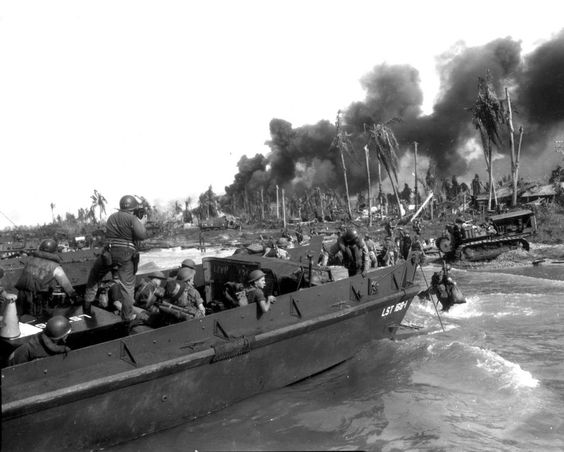 |
|
Taking Wounded Back to Beach Dressing Station
|
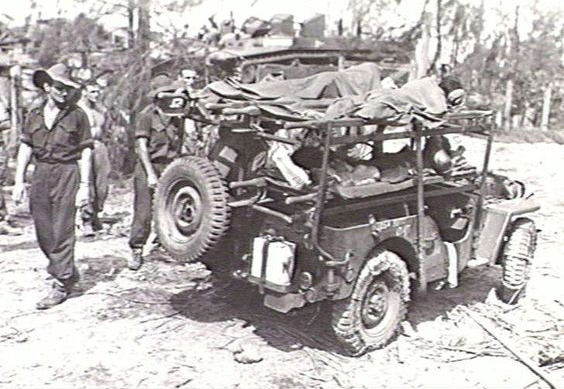 |
|
Bombing Balikpapan
|
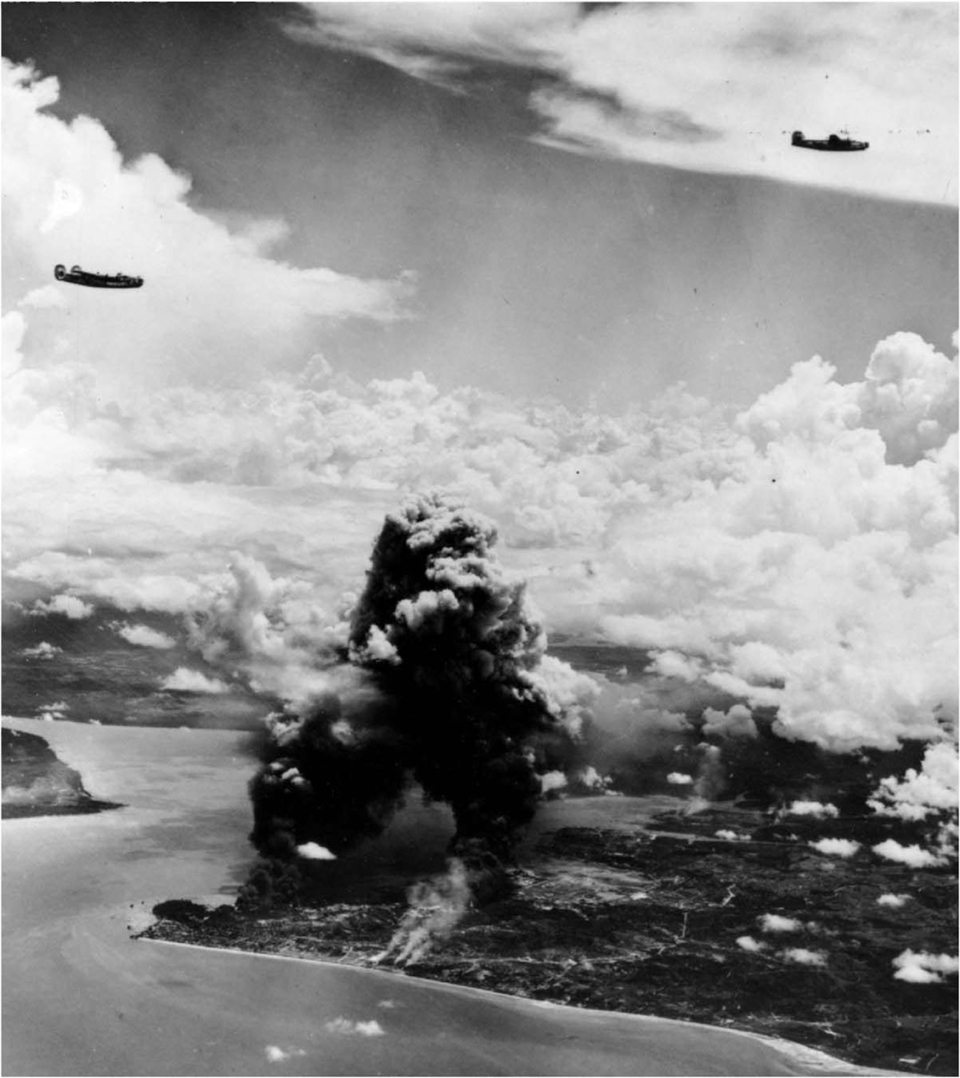 |
|
Firing Fockets at the Beach
|
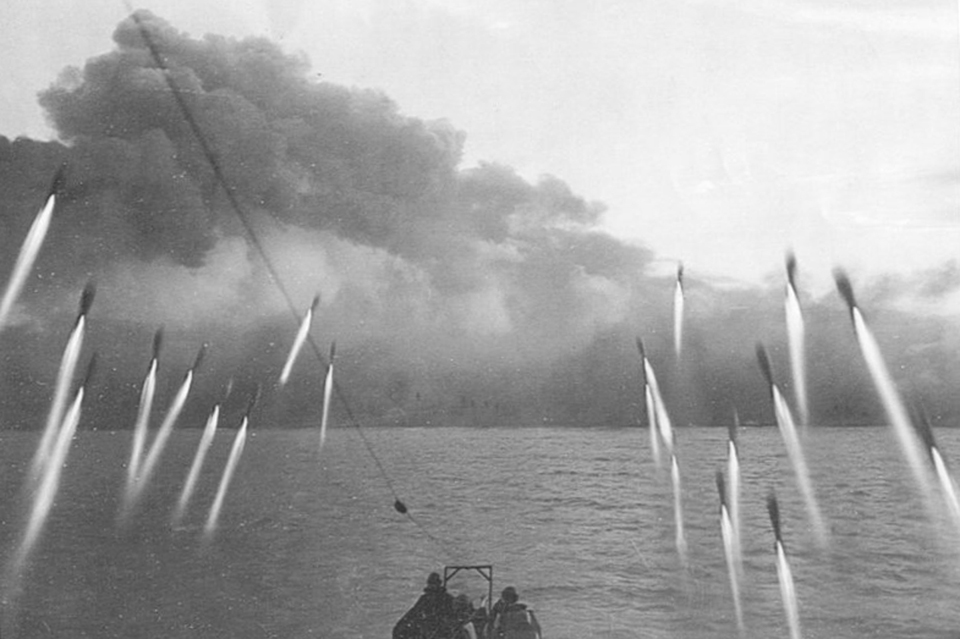 |
|
Landing Craft Taking Troops to Shore
|
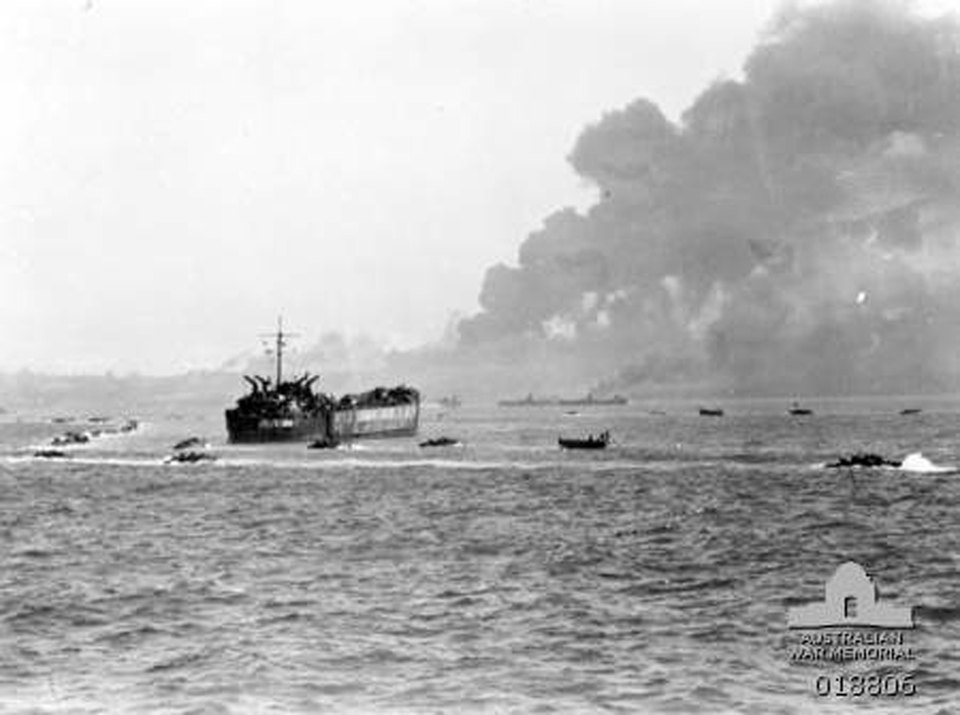 |
|
Heading toward Green Beach
|
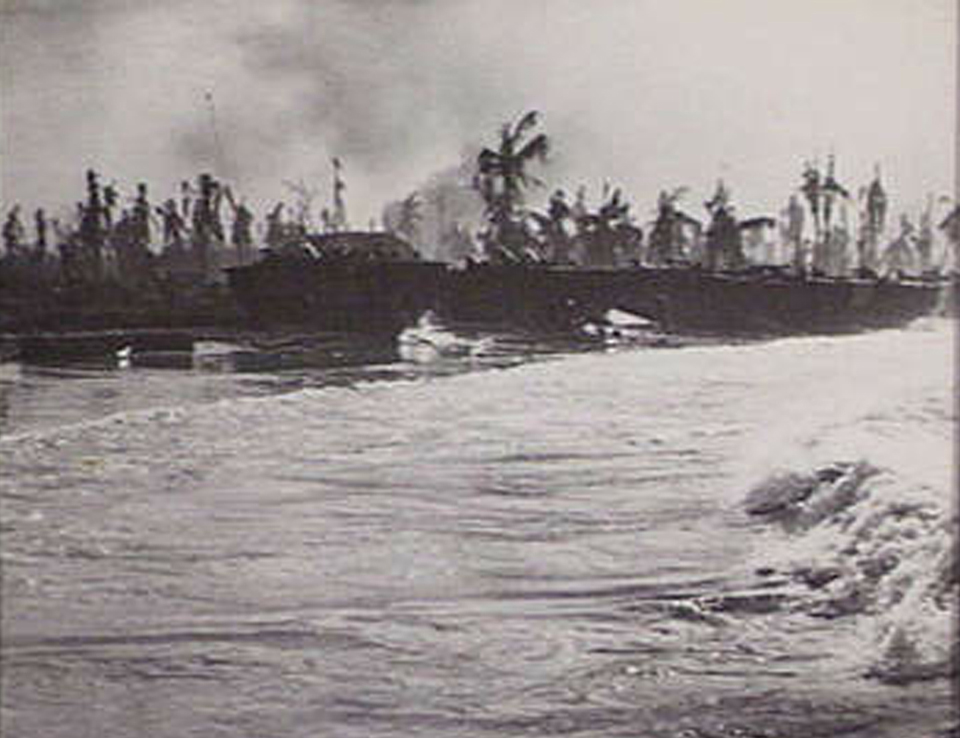 |
|
Just off Green/Yellow Beach
|
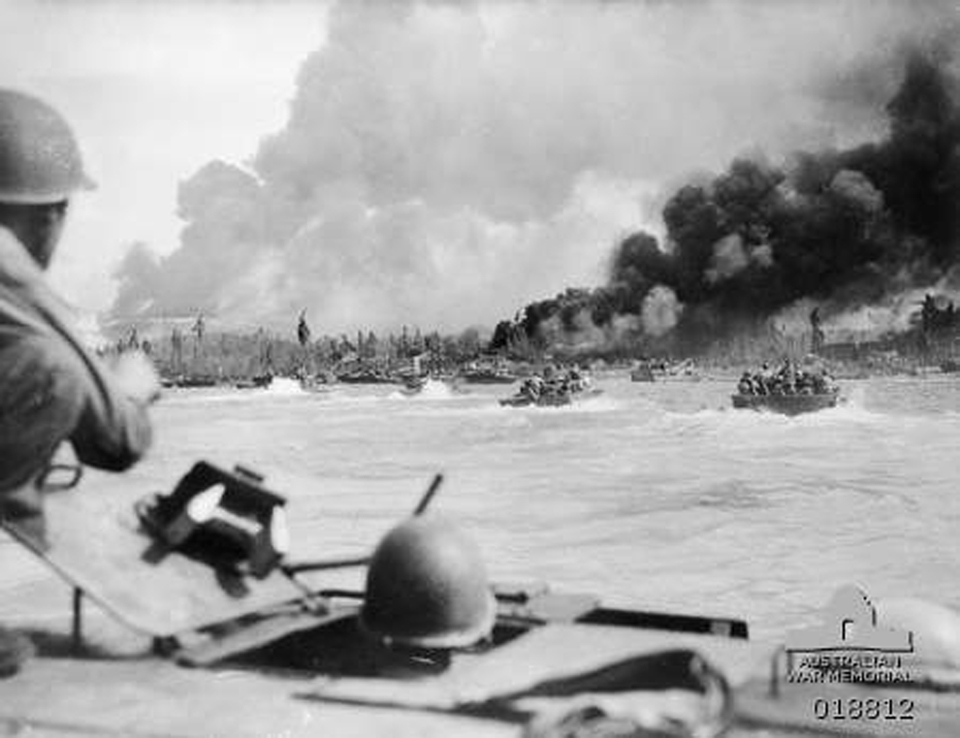 |
|
Co. A LVTs On Shore
|
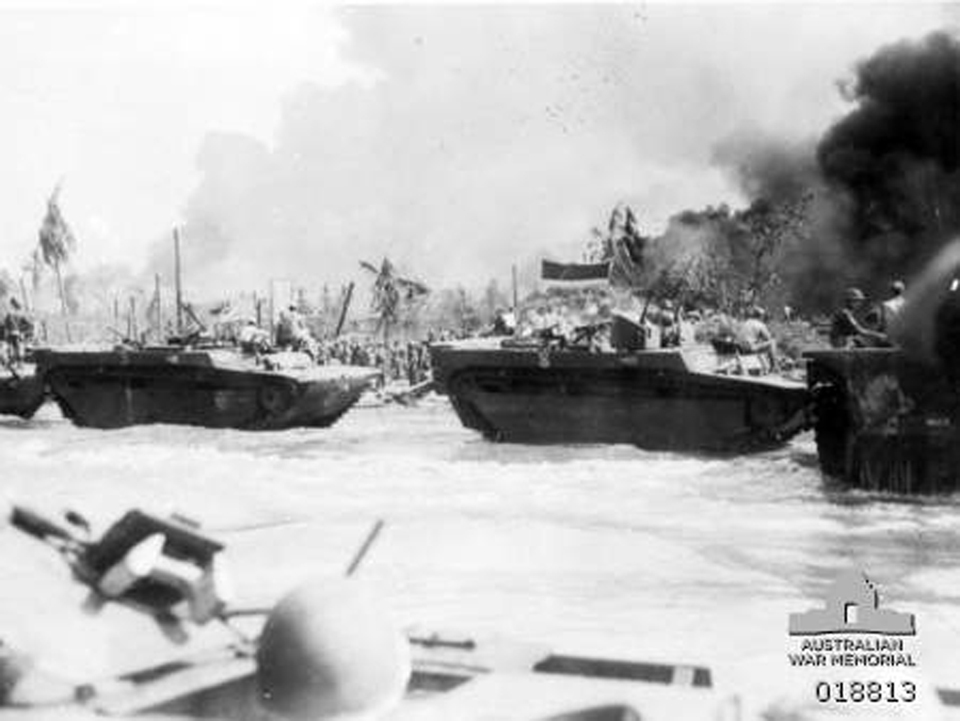 |
|
|







